Doesn’t it always seem like we’re dreaming of fall just when the summer heat is getting almost unbearable? Fall fashion, fall colors, fall décor, fall dishes! It’s all we can think about while still luxuriating in the summer sun. In preparation of the upcoming season, we dug out the fall food trends for 2018. Here’s what we will be eating, cooking and baking come September 21st:
Ancient Grains
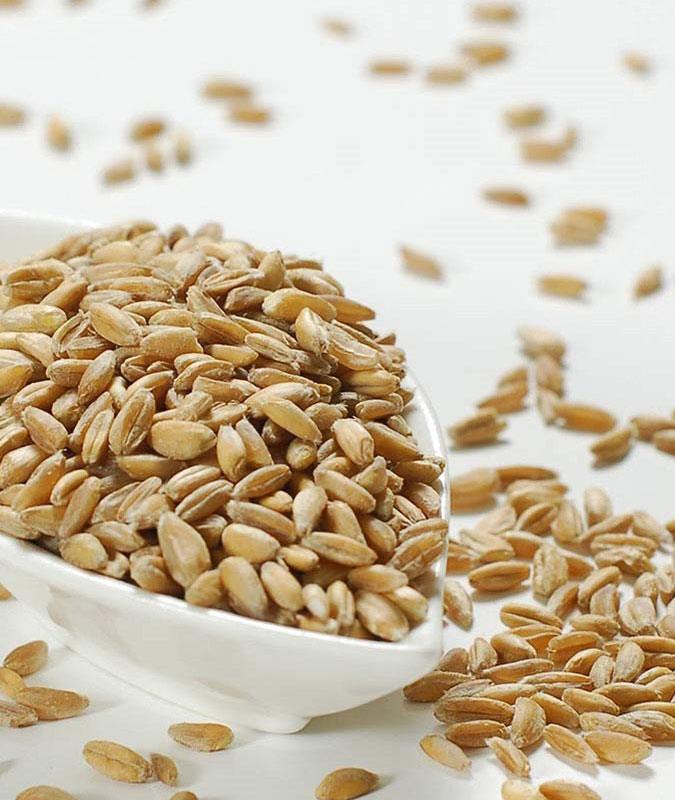
Pictured above: a traditional ancient grain, farro is a great choice for fall dishes.
When we think of ancient grains, we automatically think of grain bowls. Colorful, filling, full of healthy ingredients that not only taste good, but also are good for us. Although a grain bowl can easily be eaten year-round, by changing up the seasonal produce and adding different ingredients, it is a staple that has gained traction for foodies. This fall, the difference lies in the kind of grains we are using as base, by sourcing out those heritage grains that have been used for almost millenia. Think cradle-of-civilization grains, like millet, barley, quinoa, farro, and amaranth, to add to the more traditional ones we’re used to like oats and rice. These colorful non-traditional grains are packed with protein, vitamins, all sorts of health benefits really, and are the perfect canvas for many preparations. Serve these fall dishes with seasonal fall harvest veggies like roasted pumpkin and squash, turnips, fennel and radishes. Cooked eggs, seeds of all types, free range chicken, salmon, and any other kind of protein is a great partner. Plus, grain bowls are a great way to use up leftovers!
Warm Breakfast Grains
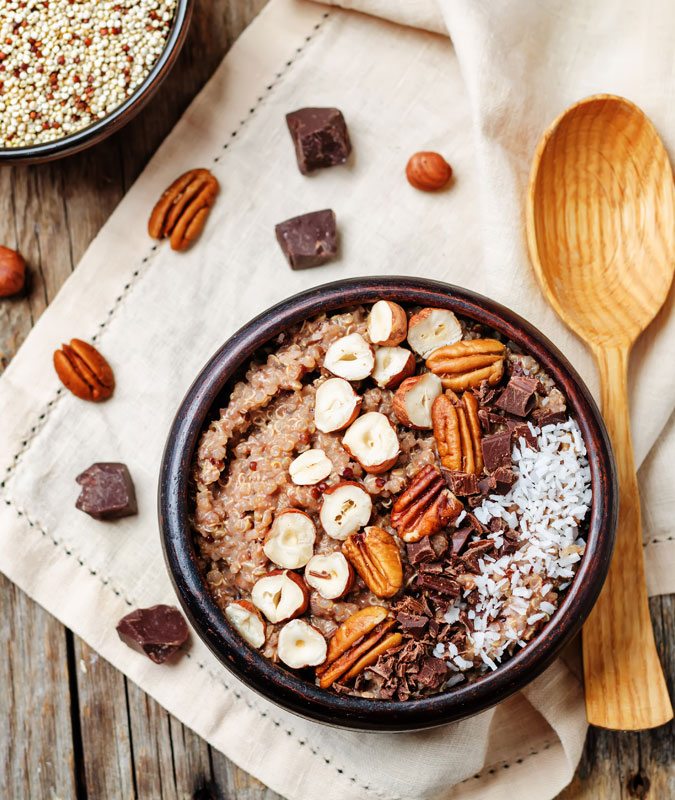
Pictured above: a healthy warm quinoa breakfast bowl with pecans, coconut flakes and bittersweet cacao.
A great sub-trend of the grain trend that goes beyond a grain-bowl is the breakfast grain variation. Quinoa can go from side dish to porridge in a second, when warmed up and blended with milk, vanilla, cinnamon, a drizzle of maple syrup and your favorite fruit toppings like bananas and strawberries. Or make a superfood breakfast with a quinoa and Greek yogurt bowl for a great vegetarian fall dish that super-boosted with protein. You can even make overnight quinoa, just like overnight oats, and pair it with nuts, coconut flakes and your favorite seasoning. The same goes for farro, the possibilities are endless! Try a warm breakfast farro bowl topped with berries, bananas or mangos, and a sprinkle of pecans or walnuts and a bit of molasses for extra sweetness and comfort. Or take it the savory route and add a poached egg for extra protein, wilted kale or spinach for antioxidants, and your favorite spices to liven it up –southwest, turmeric, endless flavor combinations!
New & Heritage Meats
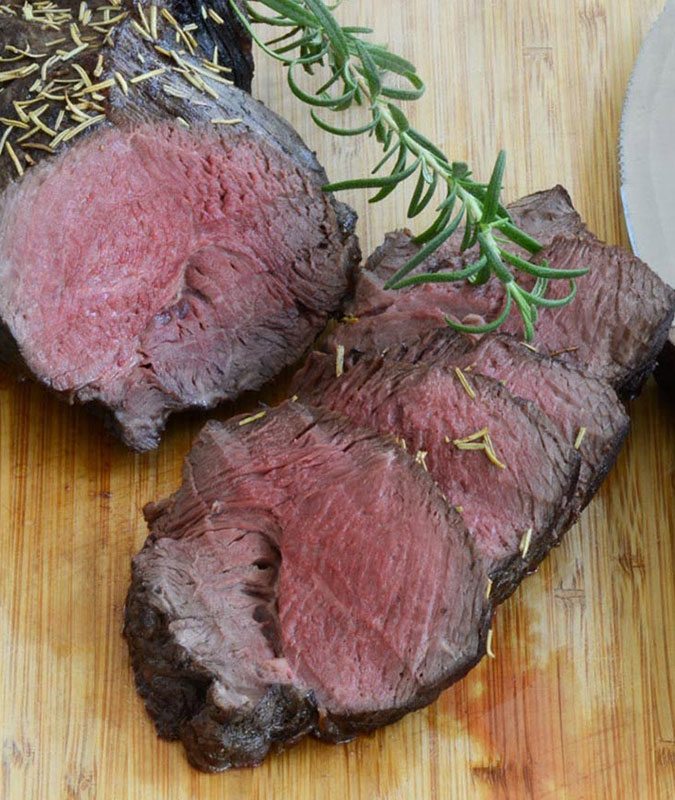
Pictured above: lean, protein-rich grass-fed Elk is perfect to add to fall menus.
We all love a good steak, of course, but the experience can get a bit tiring after a while. Much like traditional grains, this fall calls for a search for new, more interesting meats, to revive old-fashioned cuts and to go back to wilder, more flavorful animals. In the beef department, we’ve got the return to grass-fed, to a more natural way of rearing the animal that’s sustainable and respectful of both the animal’s welfare and the environment in general. Meats like grass-fed Angus that are pasture-raised are one incredible choice, with a rich, tender flavor that’s enhanced with a grass diet. Yet beyond the beef, there are so many unique choices, like Cervena Venison from New Zealand deer, also a great sustainable, natural choice. Cervena Venison is raised on lush pastures, allowed to roam free their whole life. Another favorite in the off-the-beaten-path meat department? Bison! Also known as buffalo around here, it’s almost a heritage ancient meat in America, and it’s not only delicious, it’s also naturally lean and full of iron – double than regular beef. In the pork department, foodies have turned to heritage breeds like Berkshire Kurobuta, from pigs descended from herds of the British House of Windsor. Black-coated Berkshire pigs have privileged genetics, carefully preserved and passed along each generation through DNA and pedigree controls. Berkshire pork meat is incredibly tender, and generously marbled with intramuscular fat, giving the dark pink meat a bold, intense porky flavor. Easily incorporate these meats to your fall menu by roasting and braising them and pairing them with seasonal produce.
Seasonal Fall Veggies and Fruits
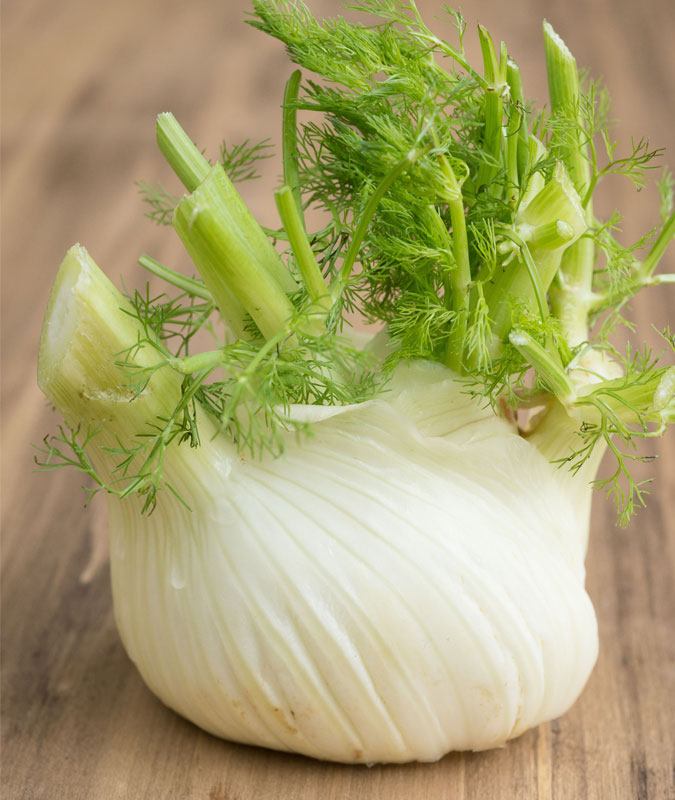
Pictured above: fennel is in season in the fall, and is great to pair with grain bowls, soups, roasted meats and more.
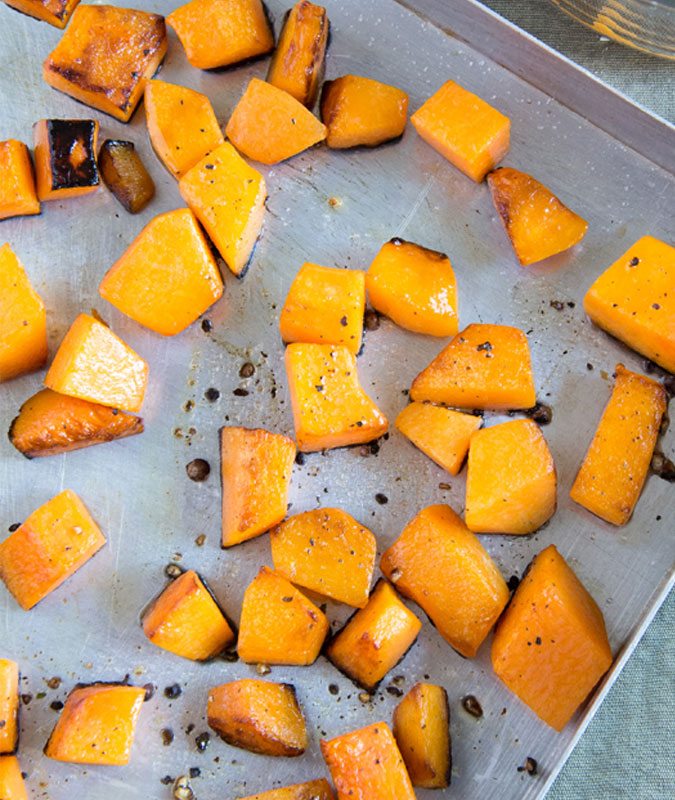
Pictured above: squash, a colorful, sweet fall harvest staple.
A great foodie or cook is not just an eater – he/she is educated, informed consumer of food. And everybody knowns that in-season produce is the best kind of product – a tomato in the summer is as ripe and sweet as it is dull and hard in the winter. A butternut squash is bursting with orange glory in the fall, and with the cooler season comes all manner of root vegetables to incorporate to our dishes – turnips, fennel, radishes, squashes, cauliflower and kale. These are the vegetables we’ll be adding to our grain bowls and roasting with our meats. In the fruit department, look for sweet ripe figs, juicy apples and pears, grapes and pomegranates. A riot of oranges, greens and reds will explode in bountiful, healthful color in our breakfasts, quiches, tarts and cheese platters. Explore savory and sweet combinations by partnering pears with blue cheese, figs and farro, pomegranates and lamb. As long as you’re choosing in-season vegetables, the flavor will always shine.
Poke Bowls
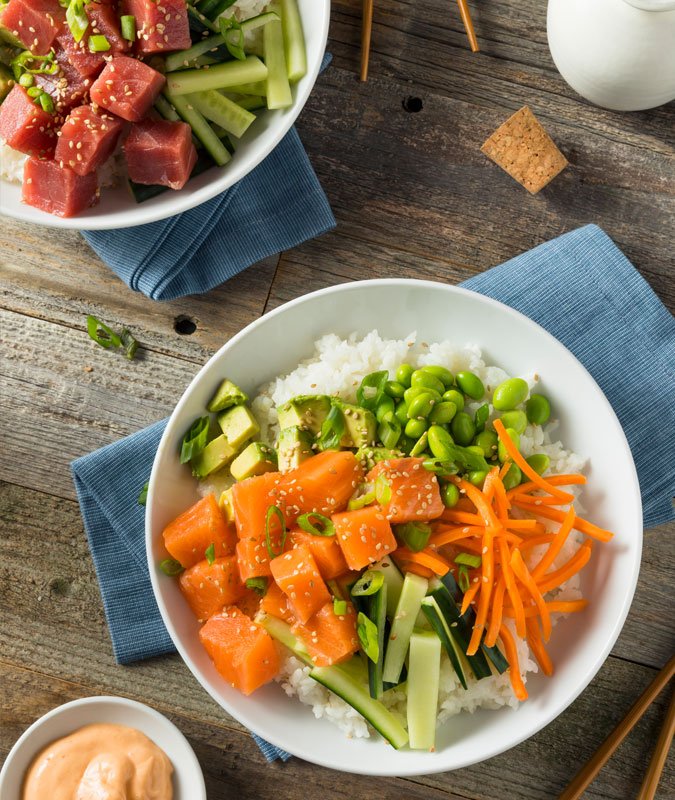
Pictured above: Hawaiian tuna and salmon poke bowls with carrots, snap peas, sesame seeds and rice.
Poke is the new “it” trend for foodies, cementing millennials’ seemingly endless love affair with foods that are served in a bowl! Poke is a traditional Hawaiian dish, a raw-fish salad that’s usually made with thick pieces of ahi tuna. There are so many variations of poke, because the chopped fish is really just a starting point – add sweet onions and sesame oil for a more Asian-inspired twist, or kimchi for extra umami, avocado is natural partner, and sesame seeds are a classic ingredient. And tuna is really just one option, you can make poke with pretty much any fresh fish like salmon, but also octopus, shrimp, and even make vegetarian poke with tofu or chunky pieces of watermelon. You can even take poke tartare-style with beef. Make your poke traditional, make it more modern, make it fresh, citrusy with lime, spicy with chili peppers or creamy with a mayo sauce, poke is the perfect dish for innovation and creativity. It goes without saying – but we’ll say it- that fish poke calls for sashimi grade seafood. Playing with colors and textures is great way to find your favorite poke recipe – and the perfect Instagram shot!